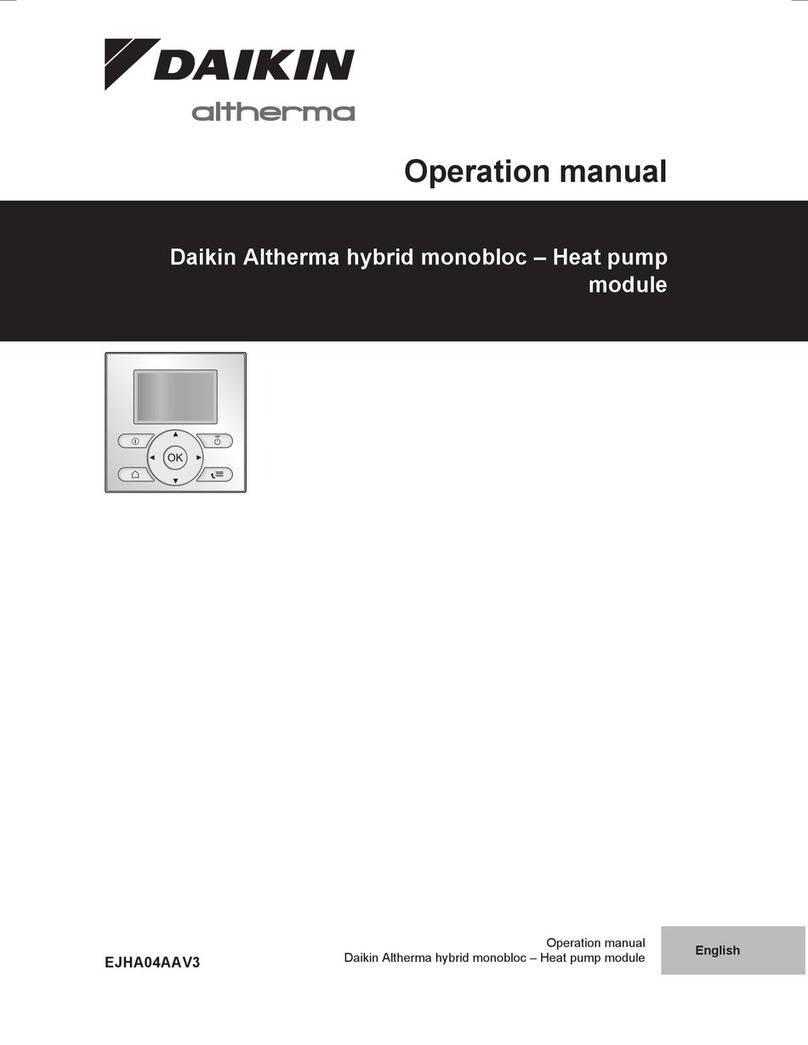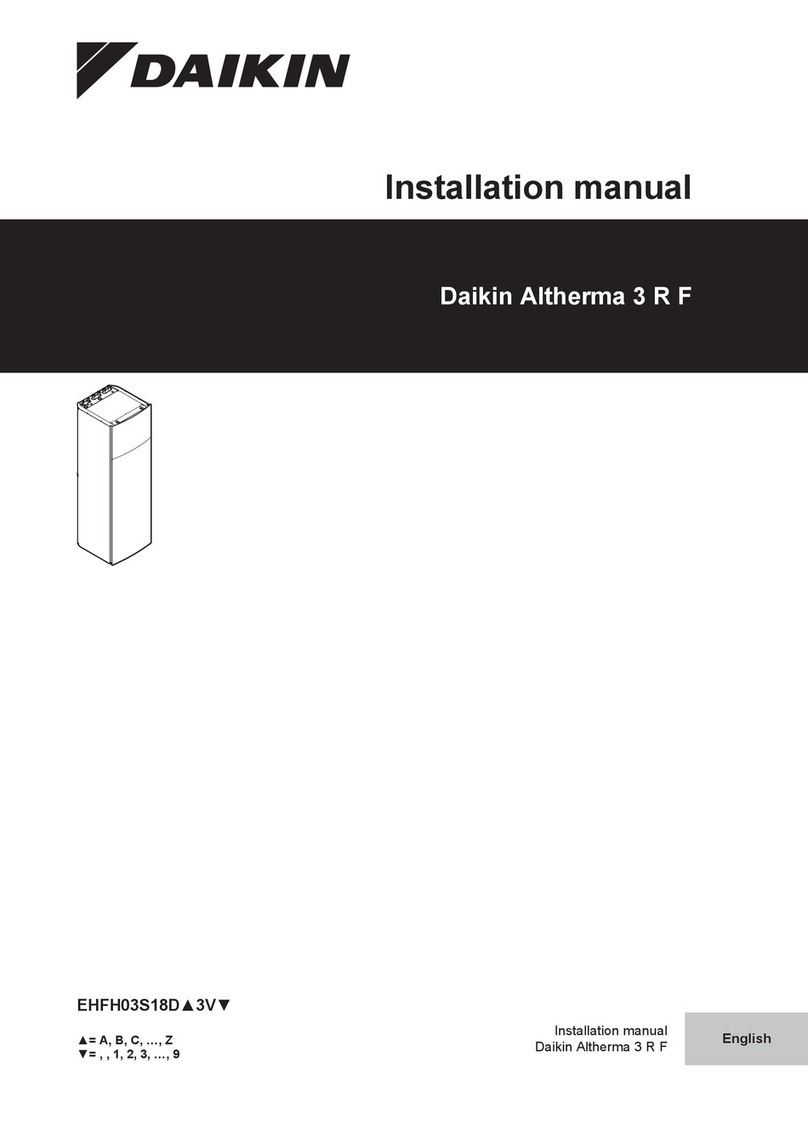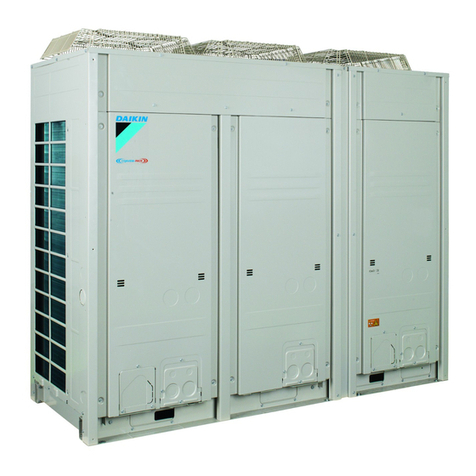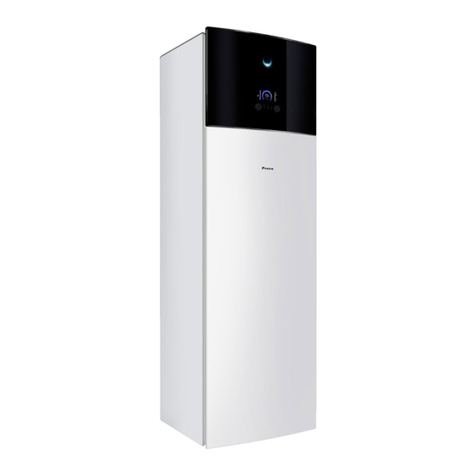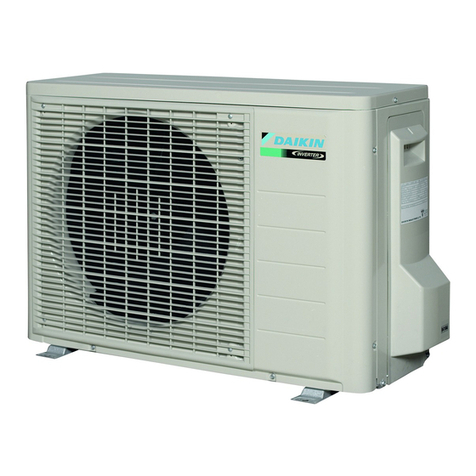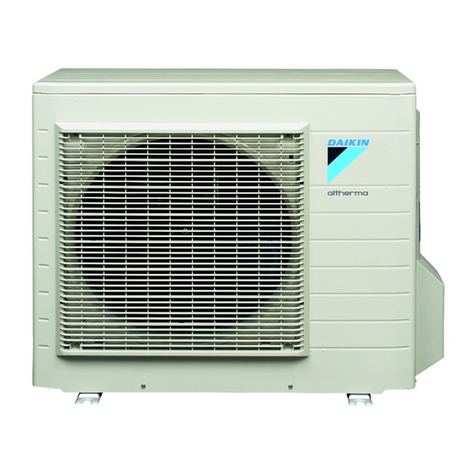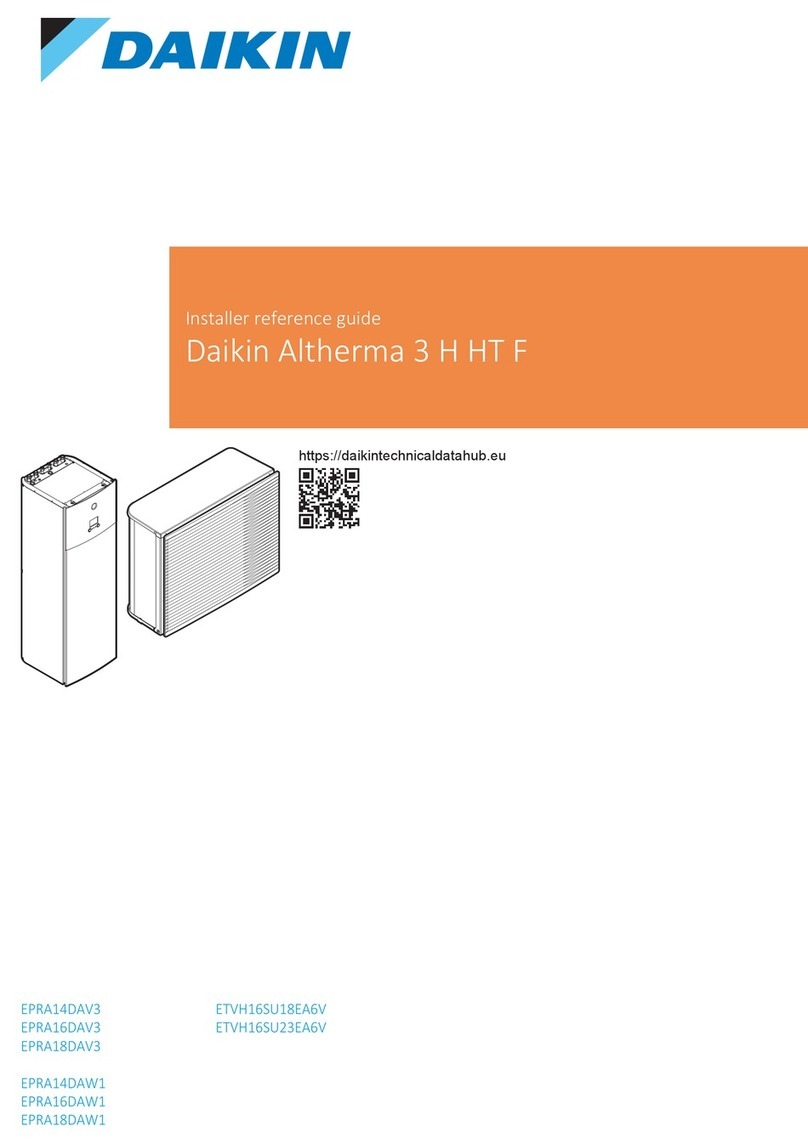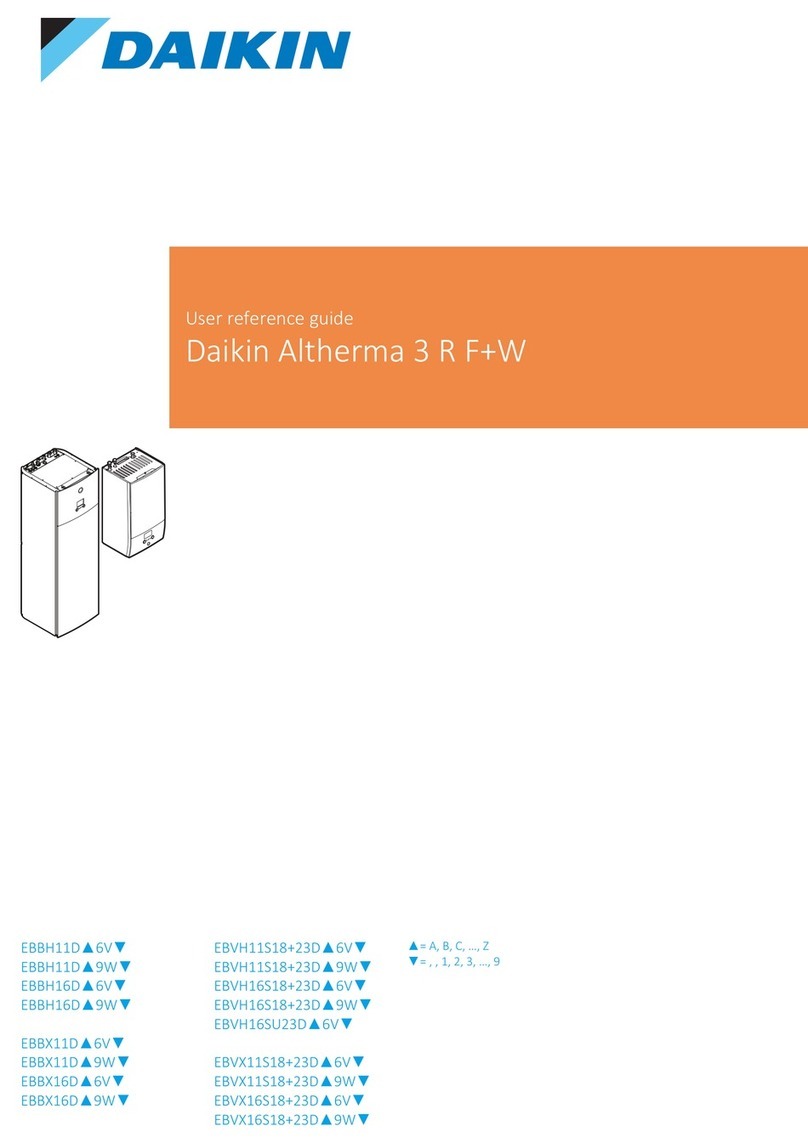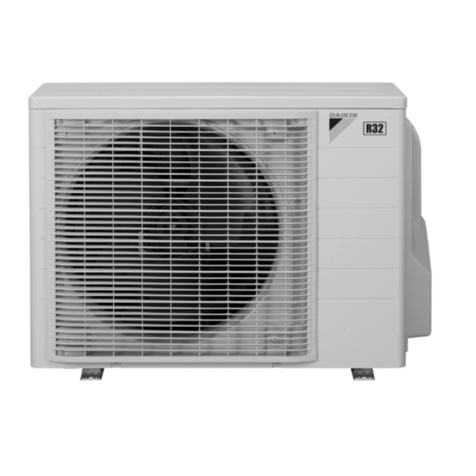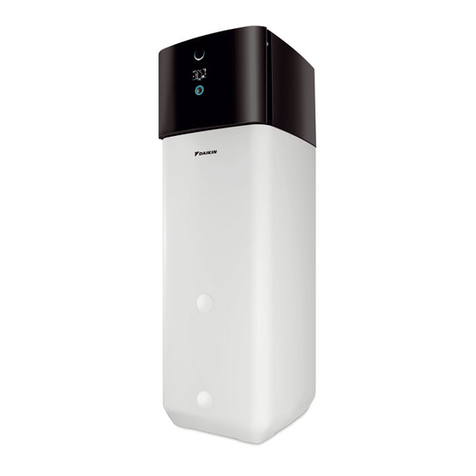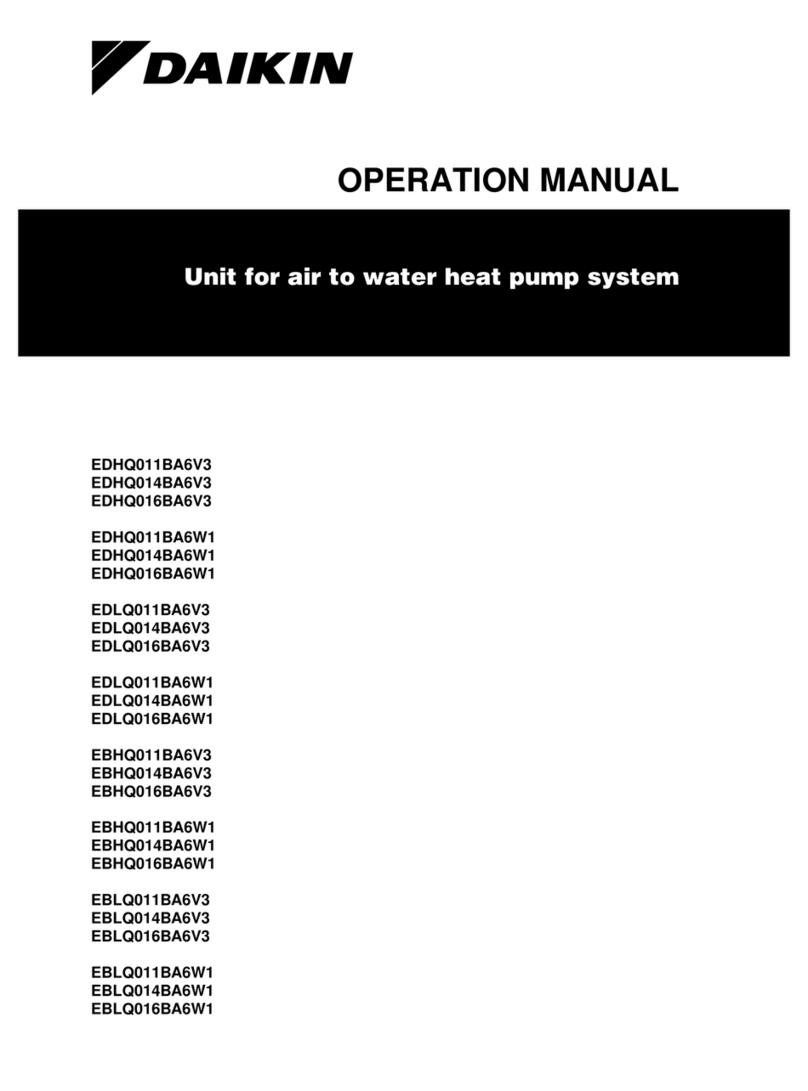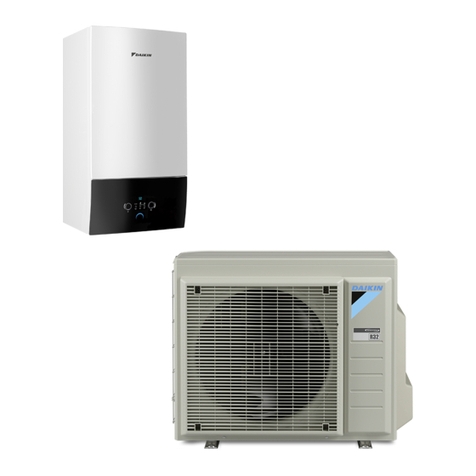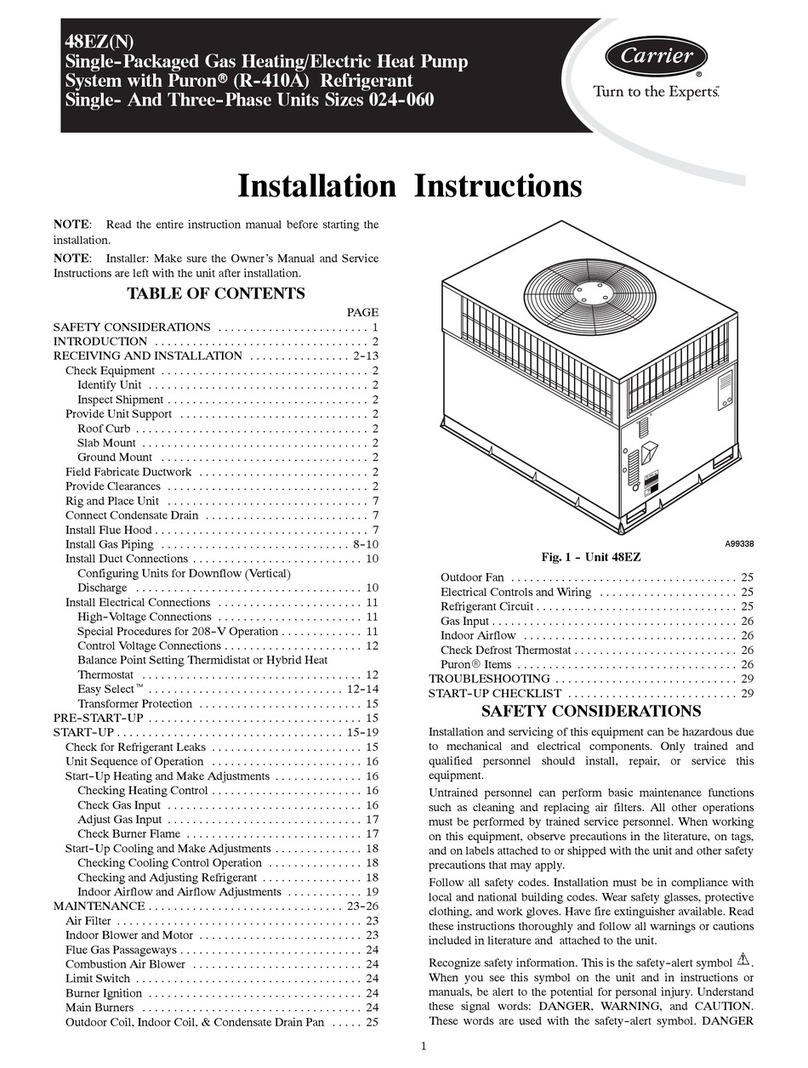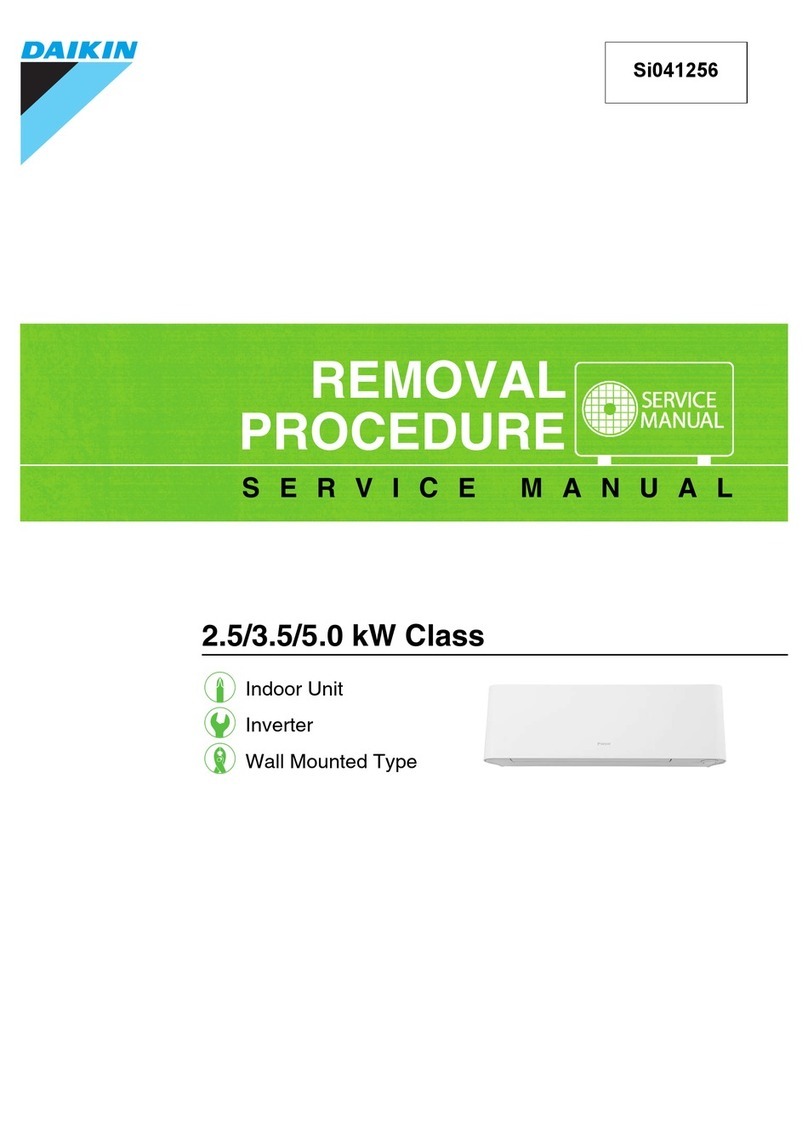
8
3. Check subcooling and superheat. Systems with TXV
application should have a subcooling of 6°F +/- 1°F and
superheatof8°F+/-1°F.
a. If subcooling and superheat are low, adjust TXV to
8°F +/- 1°F superheat, then check subcooling.
NOTE: To adjust superheat, turn the valve stem clock-
wise to increase and counter clockwise to decrease.
b. If subcooling is low and superheat is high, add charge
toraise subcooling to 6°F+/-1°F then check superheat.
c. If subcooling and superheat are high, adjust TXV valve
to8°F +/- 1°Fsuperheat, then check subcooling.
d. If subcooling is high and superheat is low, adjust TXV
valve to 8°F +/- 1°F. superheat and remove charge to
lower the subcooling to 6°F +/- 1°F.
NOTE:DoNOTadjustthechargebasedonsuctionpressure
unless there is a gross undercharge.
4. Disconnect manifold set, installation is complete.
SUBCOOLING FORMULA = SAT. LIQUID TEMP. - LIQUID LINE TEMP.
NOTE: ChecktheSchraderportsforleaksandtightenvalvecores
if necessary. Install caps finger-tight.
H
EAT
P
UMP
- H
EATING
C
YCLE
Thepropermethodofchargingaheatpumpintheheatmodeisby
weight with the additional charge adjustments for line size, line
length,andothersystemcomponents. Forbestresultsonoutdoor
units with TXVs, superheat should be 5°F +/- 1°F at 4-6" from the
compressor. Make final charge adjustments in the cooling cycle.
ADDITIONAL NOTES
1. There are (3) 7-segment LED displays on the PCB. Refer to
the Troubleshooting chart at the end of this manual for
definitions of the LED status.
2. “TERM” dip switch is used for communications bus
configuration. Leave the settings to the factory default
position.
3. “LEARN” push button is used to reset the commnications
between the equipment. Used only for troubleshooting
purposes.
4. Press “TEST” push button, during system “Standby” mode
to turn on both the compressor and outdoor fan for five
seconds.
5. The “RECALL” push button is used to retrieve the six most
recent faults. The control must be in Standby Mode (no
thermostat inputs) to use the feature. Depress the push
button for approximately two seconds and less than five
seconds. The 7-segment LED displays will then display the
sixmostrecent faults beginningwith the mostrecent fault
and decrementing to the least recent fault. The faults may
be cleared by depressing the button for greater than five
seconds. Consecutively repeated faults are displayed a
maximumofthreetimes.Refertothefaultcodedefinitions
at the end of this manual for more details.
6. A forced defrost can be initiated by pressing “TEST” and
“RECALL” push buttons simultaneously for more than 1
secondwith a valid call for heat. The forced defrost can be
terminatedby
• A 10 minute lapse in time,
• A coil temperature rise above 75°F or
• Bypressingthetwobuttonsagainformorethan1sec-
ond.
C
OMFORT
N
ET
™S
YSTEM
O
VERVIEW
The ComfortNet system is a system that includes a ComfortNet
compatible air handler/furnace/modular blower and air condi-
tionerorheatpump. Anyothersystemconfigurationsareconsid-
eredinvalid ComfortNet systemsand must beconnected asa tra-
ditional (or legacy) system.
AComfortNetheating/airconditioningsystemdiffersfromalegacy/
traditional system in the manner in which the indoor unit, out-
door unit and thermostat interact with one another. In a tradi-
tionalsystem,thethermostat sends commandstotheindoor and
outdoor units via analog 24 VAC signals. It is a one-way commu-
nication path in that the indoor and outdoor units typically do
notreturn informationtothethermostat.
Ontheotherhand,theindoorunit,andoutdoorunitcomprisinga
ComfortNet system “communicate” digitally with one another. It
is now a two-way communications path. The thermostat still
sends commands to the indoor and outdoor units. However, the
indoor and outdoor units may also request and receive informa-
tionfromoneanotherto optimize systemperformance.
Two-way digital communications is accomplished using only two
wiresbetweentheindoorandoutdoorunits. Theheatpumpcon-
trol board is powered by 24 VAC, which is supplied by the factory-
installed transformer in the heat pump control box. (If you are
attempting to install a CTK0* thermostat, installation
instructions can be found at www.comfortcontrols.com/#instal-
lation.)
AIRFLOWCONSIDERATION
Airflow demands are managed differently in a fully communicat-
ing system than they are in a legacy wired system. The system
operating mode (as determined by the thermostat) determines
which unit calculates the system airflow demand. If the indoor
unit is responsible for determining the airflow demand, it calcu-
lates the demand and sends it to the ECM motor. If the outdoor
unit or thermostat is responsible for determining the demand, it
calculates the demand and transmits the demand along with a
fan request to the indoor unit. The indoor unit then sends the
demand to the ECM motor. The table below lists the various
ComfortNet systems, the operating mode, and airflow demand
source.





















